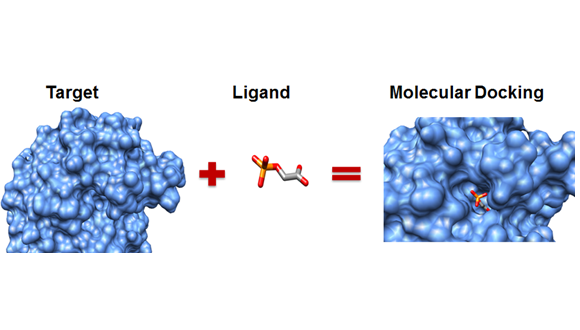AutoDock: Computational docking of small molecules for drug discovery
Instructor: Elon Yariv,
Faculty of Life Sciences,
Tel Aviv University.
Workshop date and time:
Thursday, 13/3/2016 10:00-13:00
Number of Participants: up to 30 people.
Location: PC Classroom 09,
Sherman Building,
Tel Aviv University.
To register, please fill the registration form.
Abstract
Small molecules are central to many biological processes, whether they act as substrates for an enzymatic reaction, coenzymes essential for the catalysis, or hormones transmitting a signal through cellular receptors. In all these scenarios the interactions between the ligand and its receptor provide important information about the biological process and may also allow us to change it by carrying out mutations in the protein or designing a ligand that will either inhibit or accelerate the process. Molecular docking is a widely used tool for mapping protein-ligand interactions, and it will be the focus of this workshop.
There are many docking algorithms available for use, some of which are commercial whereas others are free for academic users. In this workshop we will concentrate on AutoDock, a freely distributed molecular docking suit developed by Arthur J. Olson of The Scripps Research Institute, USA (http://autodock.scripps.edu/). AutoDock is able to sample numerous protein-ligand configurations, each differs from the other in the exact position of the ligand within the protein binding site, as well as in the ligand’s conformation. Each protein-ligand configuration sampled by AutoDock is then ranked by energy to find the best one (i.e. the lowest energy configuration). If the location of the ligand binding site is unknown it is possible to use AutoDock or other tools to predict it. In the workshop we will also learn how to use such tools, which are available online.
Protein and ligand preparation for docking simulations is highly important for getting reliable results. We will therefore emphasize these preliminary steps in the workshop. Another important aspect is the conformational flexibility of both protein and ligand – the higher it is the less accurate the results are due to computational load. Therefore, proteins are usually employed by docking simulations as rigid structures, with only the ligand rendered flexible. Since drug-like molecules usually have limited flexibility, considering their conformational changed in the simulation is usually feasible. AutoDock is able to consider limited changes in residue side chains upon ligand binding. This option will also be demonstrated in the workshop.
Workshop Materials:
- presentations: introduction, tutorial1, tutorial2
- autoligand
- input
- output


